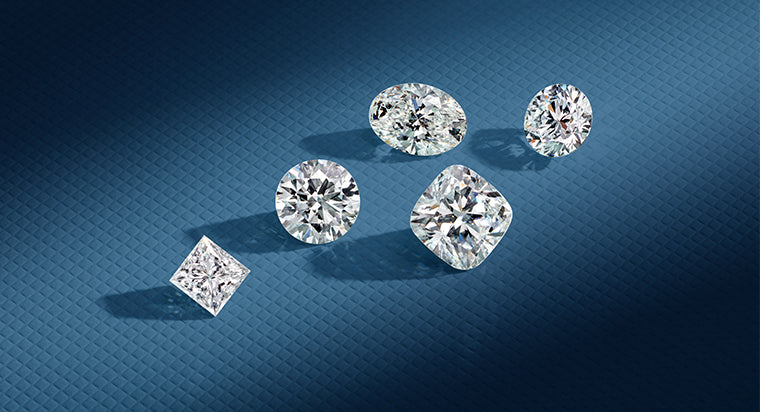Understanding Blood Diamonds and Lab-Created Diamonds: A Comprehensive Guide

The Issue of Blood Diamonds
Blood diamonds, also known as conflict diamonds, are a controversial and troubling issue that has affected millions of lives across the world. These diamonds are mined in war zones and sold to finance armed conflict against governments, often in countries with little regulation or oversight. The mining of blood diamonds has been linked to severe human rights abuses, including forced labor, child labor, and violent exploitation. The trade of these diamonds has fueled conflicts in regions like Sierra Leone, Angola, and the Democratic Republic of Congo, making them a source of both violence and exploitation.
The key problem with blood diamonds lies in their origins. They are mined under dire conditions, often controlled by rebel groups who use the profits to fund their wars. These diamonds have tarnished the image of the jewelry industry, as many consumers unknowingly contribute to financing violence and human rights abuses. Efforts have been made to address this issue, including the creation of the Kimberley Process Certification Scheme, which aims to prevent the trade of blood diamonds. However, challenges remain, and the term “blood diamonds” continues to evoke strong emotional and political reactions worldwide.
The Rise of Lab-Created Diamonds
In contrast to blood diamonds, lab-created diamonds represent a more ethical alternative for those who want to purchase diamonds without contributing to the global conflict. Lab-created diamonds, also known as synthetic or cultured diamonds, are produced in controlled environments that replicate the natural conditions under which diamonds form. These diamonds have the same physical, chemical, and optical properties as mined diamonds but are made without the human rights violations and environmental destruction associated with traditional diamond mining.
Lab-created diamonds have been gaining popularity in recent years, especially among consumers who are concerned about the ethical implications of purchasing natural diamonds. As technology has advanced, producing lab-created diamonds has become more efficient and affordable, allowing consumers to enjoy the luxury of diamonds without supporting the negative impact of blood diamonds. Furthermore, lab-created diamonds offer a wide range of styles and qualities, catering to diverse preferences and budgets.
The Environmental Impact: Blood Diamonds vs. Lab-Created Diamonds
One of the significant differences between blood diamonds and lab-created diamonds is their environmental impact. Traditional diamond mining can cause severe ecological damage, including habitat destruction, soil erosion, and water pollution. In regions where blood diamonds are extracted, these environmental consequences are often overlooked as the focus is on the financial profits gained from the trade. This contributes to long-term environmental degradation that affects both the local wildlife and the surrounding communities.
Lab-created diamonds, on the other hand, have a much smaller environmental footprint. Because they are made in laboratories using sustainable energy sources, the extraction process is more controlled and less harmful to the environment. Additionally, no land is stripped, and no ecosystems are disrupted in the creation of lab-grown diamonds. Consumers who choose lab-created diamonds are often motivated by a desire to reduce their ecological footprint, making them a popular choice for those committed to sustainability.
Ethical Considerations: Blood Diamonds and Human Rights
The ethical dilemma surrounding blood diamonds has sparked a wider conversation about human rights abuses in the global diamond trade. The people working in blood diamond mines, particularly in conflict zones, are often subjected to harsh and exploitative conditions. Child labor, forced labor, and unsafe working environments are prevalent in many regions where blood diamonds are mined. These issues highlight the importance of considering human rights when purchasing diamonds and jewelry.
In stark contrast, lab-created diamonds are free from these ethical concerns. Since they are produced in controlled laboratory settings, workers are not exposed to the dangers and abuses that occur in traditional diamond mines. Moreover, lab created diamonds are often seen as a more transparent option for consumers who want to ensure their purchase does not contribute to human suffering or exploitation. By supporting lab-created diamonds, consumers can align their values with their purchasing decisions and avoid the ethical pitfalls associated with blood diamonds.
The Price Factor: Blood Diamonds and Lab-Created Diamonds
While the ethical and environmental concerns surrounding blood diamonds are significant, the cost of traditional diamonds is another important consideration. Blood diamonds, like other mined diamonds, often come with a high price tag due to the expenses associated with extraction, transportation, and distribution. Additionally, the rarity of natural diamonds contributes to their premium pricing.
Lab-created diamonds, however, tend to be more affordable than their natural counterparts. Because they can be manufactured in a controlled environment without the complexities and costs associated with mining, lab-grown diamonds typically offer the same quality at a fraction of the price. For consumers who are concerned about both ethics and budget, lab-created diamonds provide an accessible and cost-effective alternative to blood diamonds. The reduced price point makes them a compelling choice for engagement rings, wedding bands, and other fine jewelry.
Conclusion: Choosing Ethical and Sustainable Diamonds
When it comes to purchasing diamonds, the decision to choose between blood diamonds and lab-created diamonds is more important than ever. Blood diamonds continue to fuel conflict and exploitation in various parts of the world, while lab-created diamonds offer an ethical, environmentally-friendly, and affordable alternative. By making an informed decision, consumers can enjoy the beauty of diamonds without compromising their values or contributing to the negative consequences of the diamond trade. Whether you’re looking for a luxurious engagement ring or a beautiful piece of jewelry, lab-created diamonds provide a solution that aligns with both ethical and sustainable practices, making them a responsible choice for today’s conscious consumer.
